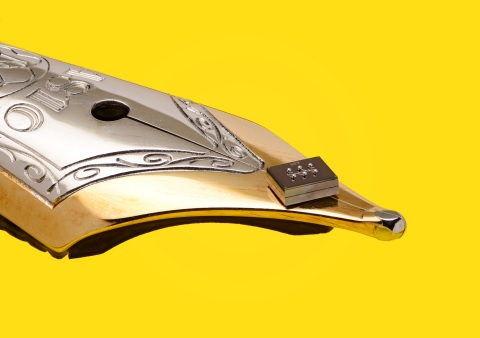Sand 9 challenges quartz MEMS dominance in mobile applications

The company's latest MEMS devices outperform competitive timing solutions and support integration with mobile chipsets and low-power wireless connectivity devices
Sand 9 has launched what it claims are the first micro-electromechanical systems (MEMS) timing products designed to meet the stringent performance, cost, size and reliability requirements of high-volume mobile applications such as 3G/4G cellular and GPS/GNSS as well as low-power wireless connectivity applications such as Bluetooth Smart.
Sand 9 says its TM361 and TM061 are also the only timing products that support integration with mobile and wireless connectivity chipsets, conserving board space and reducing bill of materials.
"The proliferation of mobile phones and the rapid growth of the Internet of Things have dramatically changed the way we communicate with each other and with our digital environment. Our vision is to disrupt the timing market by completely eliminating discrete quartz components in cellular, GPS and other mobile applications," says Vince Graziani, CEO, Sand 9.
He continues, "This is a major milestone for Sand 9. Our unique approach using piezoelectric MEMS has enabled us to develop the first MEMS timing devices that meet the specific requirements for mobile phones as well as applications for the emerging Internet of Things. Size and integration play a key role in both of these markets, and Sand 9 will be spearheading the adoption of integrated timing across the industry."
"These new platforms hail a paradigm shift in the way the mobile and wireless connectivity industries consider timing," points out Alan Mond, executive vice president, marketing and sales, Sand 9. "By partnering with major semiconductor companies, we can now effectively eliminate the need for external quartz devices. This will allow OEM manufacturers to simplify their system designs, reduce size, improve performance and reliability, and reduce costs."
TM361
As the first product based on Sand 9's Temperature Sensing MEMS Resonator (TSMR) platform, the TM361 targets the replacement of temperature-sensing crystals (TSXs) for cellular transceiver and GPS/GNSS/WiFi wireless connectivity combo chips. The TM361, picture at the top of this article, is a MEMS resonator with a built-in temperature sensor and heater for temperature compensation and calibration.
The TM361 features:
Ultra-small size - at just 0.76 x 0.68 x 0.50 mm wafer-level chip scale package (WLCSP), the TM361 is designed for cost-sensitive System in Package (SiP) applications.
Performance - the TM361 offers 10x better thermal coupling than quartz by physically integrating the temperature detector with the MEMS resonator. This results in high-precision temperature compensation at < 10 ppb/s.
Quality - no activity dips/hysteresis, which improves GPS-lock and reduces LTE packet loss, enabling far fewer service disruptions.
Best-in-class shock and vibration resistance - offering < 0.1 ppb/G, the TM361 supports use even in harsh environments.
TM061
As the first product based on Sand 9's MEMS Resonator (MR) platform, the TM061 meets the demands of the Internet of Things (IoT), wireless-everywhere ecosystems necessitating devices that are rugged, low-power, low-cost and very small in size.
The TM061 is a MEMS resonator only, and does not include a temperature sensor, heater or oscillator circuit. It serves as a quartz crystal replacement for low-power wireless connectivity applications such as Bluetooth Smart. Like all MEMS timing products from Sand 9, it can be overmolded without impacting performance, providing the size reduction required to enable the IoT.
The TM061 features:
Ultra-small size - with the same miniature footprint as the TM361, the TM061 is 50 percent smaller than the smallest conventional quartz device.
Ruggedness - the TM061 is several orders of magnitude more resistant to shock and vibration than quartz, making it ideally suited to wireless sports and fitness applications.
Low Power - the TM061 requires less than 300 μA when paired with a typical 1.8V oscillator.
"The proliferation of mobile phones and the rapid growth of the Internet of Things have dramatically changed the way we communicate with each other and with our digital environment," says Jérémie Bouchaud, director and senior principal analyst, MEMS & Sensors, IHS.
"While system-on-chip innovations have contributed to this massive proliferation, timing has been the exception, because quartz does not support integration. With the advent of integration-ready system-level timing solutions from companies such as Sand 9, however, this is bound to change."
Roadmap to Integration
Sand 9 also announced a new platform on its roadmap, the Temperature Sensing MEMS Oscillator (TSMO). TSMO products will include an oscillator circuit, to guarantee phase noise while providing another level of integration for mobile applications. As with TSMR products such as the TM361, TSMO products will meet the precision timing requirements of cellular transceivers and GPS/GNSS/WiFi combo integrated circuits (ICs).
Availability
The TM061 will sample to lead customers in November 2013 and will be ramping to mass production in Q3 2014. The TM361 will sample to lead customers in December 2013 and will be ramping to mass production in Q4 2014. Both products are available in 0.76 x 0.68 x 0.50 mm WLCSP for co-packaging.

































